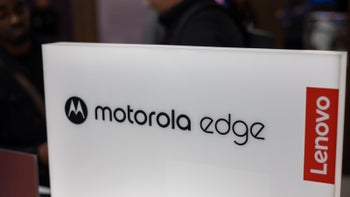Samsung details the Galaxy S11's next-gen processor core

Well, those guesstimates were proven right by none other than Samsung, as the new Mongoose core commits were just detailed in the semiconductor Wiki, and the 7nm (7LPP) method has indeed been used. The LPP here stands for Low Power Plus, indicating that this is the second generation of the 7nm process that chipsets like the Apple A13 and the Snapdragon 855 have been built on. According to Samsung:
The new 7LPP allows up to 40% increase in area efficiency with 20% higher performance or 50% lower power consumption, resulting in better yields with significantly fewer layers...
This fundamental shift in how wafers are manufactured gives our customers the opportunity to significantly improve their products’ time to market with superior throughput, reduced layers, and better yields. We’re confident that 7LPP will be an optimal choice not only for mobile and HPC, but also for a wide range of cutting-edge applications.
Bear in mind that the 20% performance or 50% power consumption gains are not compared to the previous, 8nm or even 10nm processes, but rather compared to that first-gen 7nm method that the latest A-series or Snapdragon 8-series are created with. Given that the Snapdragon 865 is said to be made by Samsung with the extreme ultraviolet (EUV) lithography that leads to the 7nm LPP process, we can expect both Galaxy S11 chipset models to be beasts.
| Exynos 990 | Exynos 9825 | Snapdragon 855+ | Apple A13 | |
|---|---|---|---|---|
| Production process | 7nm EUV | 7nm EUV | 7nm (TSMC FF) | 7nm (TSMC N7P) |
| Processor cores | 2x Exynos M5 2x Cortex A76 4x Cortex A55 | 2x Exynos M4 @2.73GHz 2x Cortex A75@2.4GHz 4x Cortex A55@1.95GHz | 1x Kryo 485 Gold (custom Cortex-A76) @ 2.96GHz 3x Kryo 485 Gold (custom Cortex-A76) @ 2.42GHz 4x Kryo 485 Silver (custom Cortex-A55) @ 1.80GHz | 2x Lightning @2.66GHz 4x Thunder @1.7GHz |
| GPU | Mali-G77 MP11 | Mali-G76 MP12 | Adreno 640 | Apple custom quad-core |
| Modem | Exynos 5123 (Category 24) Downloads up to 7.3Gbps (mmWave), 5.1Gbps (sub-6GHz), or 3Gbps (4G LTE), 8xCA Uploads: up to 422 Mbps | Shannon LTE (Category 20) Downloads up to 2Gbps, 8xCA Uploads: up to 316 Mbps Exynos 5100 5G modem add-on | Snapdragon X24 LTE (Category 20) Downloads: up to 2Gbps, 7xCA Uploads: up to 316Mbps X50 5G modem add-on | Intel XMM7660 (Category 19) Downloads: up to 1.6Gbps, 7xCA Uploads: up to 225Mbps |
| AI co-processor | Yes, dual-core NPU | Yes, dual-core NPU | Yes | Yes, octa-core Neural Engine |
| Video encode | 4K HDR at 150fps 8K HDR at 30fps | 4K HDR at 150fps 8K HDR at 30fps | 4K HDR10+ | 4K HDR at 60fps |
| Misc. | UFS 3.0 storage support for up to 2.9GB/s speeds LPDDR5 memory support Single-camera up to 108MP 120Hz display refresh rate | UFS 3.0 storage support for up to 2.9GB/s speeds | 4K HDR Bokeh Video 8K 360 VR video playback Always-on noise cancellation Dual-frequency GPS | Computational photography Machine learning capable of 1 trillion operations per second |
Moving on to the Mongoose cores, they are actually classified as a "medium" improvement over M4, which is a fairly significant step in processor core parlance. The main difference in comparison with the M4 in the Note 10 stems from the decreasing the misprediction penalty with a whole cycle, and the 25% bump in instruction queues.
What does that all mean? A faster, more efficient, and better suited for machine learning processor will be in store for the Galaxy S11 series. Too bad that Samsung is shuttering its Exynos research center in Austin, so M5 might be the last custom core design it issues, turning the S11 into an instant legend. Too bad Qualcomm didn't name their custom core architecture Cobra now, isn't it?
Follow us on Google News













Things that are NOT allowed:
To help keep our community safe and free from spam, we apply temporary limits to newly created accounts: